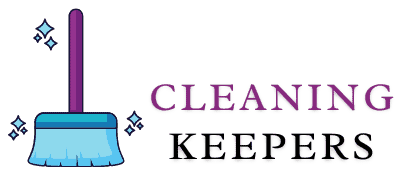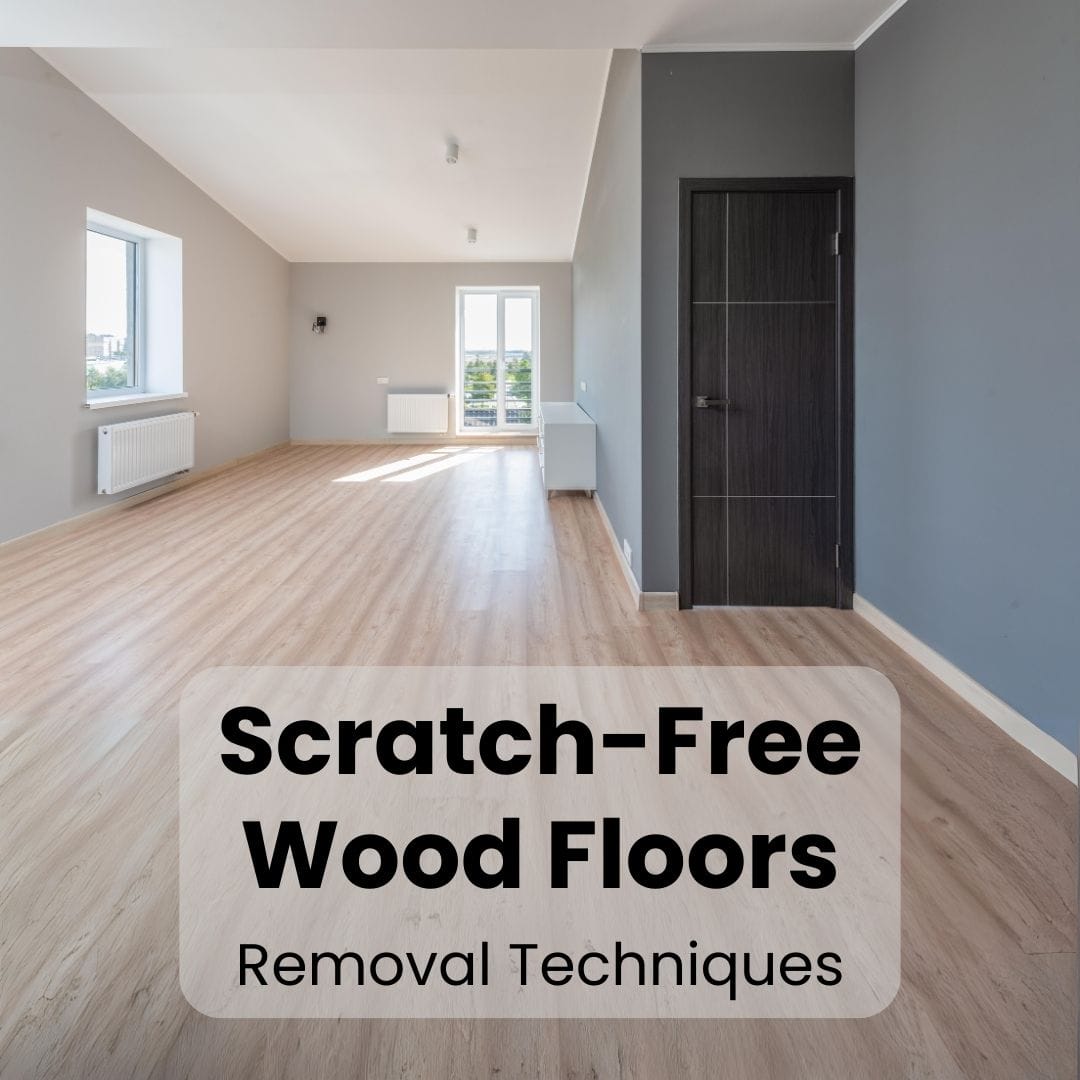Maintaining the aesthetic appeal of a business environment plays a crucial role in making a lasting impression on clients and customers. Wooden floors, a popular choice for many businesses, exude a unique charm and sophistication. However, scratches on wood floors are a common issue that marks their elegance. This article will equip you with knowledge and practical steps to remove scratches from wood floors. We understand the significance of your time as a business owner. Hence, we provide solutions that are easy to follow, ensuring your wooden floors retain their sleek appearance without requiring professional help.
Understanding Wood Floor Finishes
Before removing scratches, we must acquaint ourselves with the types of wood floor finishes, as understanding the finish is crucial in the scratch repair process detailed in how to repair scratches on hardwood floor. These finishes not only enhance the aesthetic appeal of your floors but also serve as a protective layer that can be susceptible to damage over time. Understanding the kind of finish on your wooden floor will aid in determining the most effective method for scratch removal.
To learn more about different wood floor finishes, you might find our article on Which Finish Is Right for Your Hardwood Floors
Different Wood Floor Finishes and Scratch Susceptibility.
This section will delve into the common types of wood floor finishes, providing an understanding of their unique properties and how susceptible they are to scratches.
- Polyurethane Finish: A polyurethane finish is a popular choice due to its durability and resistance to wear and tear. However, it can be prone to visible scratches, especially in high-traffic areas.
- Oil-Based Finish: Oil-based finishes penetrate deep into the wood, offering a warm and natural look. While they provide good resistance to scratches, deep gouges can still occur.
- Lacquer Finish: Lacquers provide a high-gloss finish and decent scratch resistance. However, if scratches occur, they can be more challenging to repair due to the lacquer’s glossy nature.
- Shellac Finish: Shellac is a natural finish that offers a vintage appeal. While it’s relatively easy to repair scratches on a shellac finish, it’s less resistant to scratches than other finishes.
- Wax Finish: Wax finishes give wood a beautiful, satiny sheen. While they’re susceptible to scratches, wax is simple to reapply, making scratch repair easy.
For more details on polyurethane finishes, read How to Repair the Water Damage to Laminate
Tips on Identifying Your Floor’s Finish To Choose The Right Repair Method.
- Scratch Test: Gently scratch the surface with your fingernail in an inconspicuous area. You likely have a wax or oil finish if it leaves a mark.
- Water Test: Dab a few drops of water on the floor. If the water beads, it indicates a polyurethane finish; if it soaks in, you may have an oil or wax finish.
- White Spirit Test: Rub white spirit on the floor in a hidden area. If the finish dissolves, you have a lacquer or shellac finish.
Preventive Measures to Protect Wood Floors
Before we dive into the various techniques for scratch removal, let’s first address some preventive measures to protect your wood floors. Having a proactive strategy in place can help maintain the pristine condition of your feet and significantly minimize the risk of scratches, ensuring the sustainability of your investment.
Implementing a ‘No Shoes’ Policy is a proactive strategy to protect your floors. For more on maintaining your floors, check out How to Clean and Maintain Laminate Floors – Best Practices and Products
Strategies For Preventing Scratches On Wood Floors
- Use Furniture Pads: Attach felt pads to the bottoms of your furniture, and for more on protecting your floors, see how to keep floor mats from sliding on vinyl floor. This simple step can significantly reduce the risk of scratches formed by shifting furniture.
- Lay Down Area Rugs: Rugs can protect your floor from wear and tear in high-traffic spots. They also add an aesthetic appeal to your space.
- Implement a ‘No Shoes’ Policy: Encourage employees and visitors to remove their footwear or use shoe covers. This practice reduces the amount of dirt and grit that may cause scratches.
- Regular Cleaning: Use a soft broom or vacuum designed for wood floors to remove dust and debris, preventing scratch formation.
- Trim Pet Nails: If pets frequent your business premises, trimming their nails can prevent floor scratches.
Regular Cleaning: Use a soft broom or vacuum designed for wood floors. Learn more about effective cleaning tools in our article on Best Vacuum Cleaner for Laminate Floors
Importance of Regular Maintenance To Minimize Damage.
Regular maintenance is key to preserving the longevity and aesthetics of your wood floors. It involves routine cleaning to remove dust, dirt, and grit that can scratch the surface over time. Keeping the feet clean can prevent new scratches and existing ones from worsening.
Moreover, regular maintenance includes periodic reapplication of finish to protect the floor and maintain its shine. This not only enhances the appearance of your floor but also strengthens its resistance against wear and tear.
DIY Solutions for Minor Scratches
Now that we’ve equipped ourselves with the knowledge of wooden floor finishes and preventive measures let’s turn our attention to some DIY solutions for minor scratches. This section will provide simple, cost-effective methods to restore your wooden floors to their original charm and elegance.
Walnut Method: Rubbing a walnut along the scratch can be effective, and for other DIY solutions, consider how to get dents out of laminate flooring.
Step-by-step Guide for Minor Scratch Repair.
- Walnut Method: Start by taking a walnut and rubbing it along the scratch, making sure to follow the grain of the wood. The natural oils in the walnut will seep into the wood, helping to repair the scratch. Leave it briefly, then buff the area with a soft cloth.
- Baking Soda Technique: Create a paste by mixing equal parts of baking soda and water. Apply this paste to the scratch, gently rubbing it with a cloth. Wait for a few minutes, and then wipe off the excess paste. The baking soda acts as a mild abrasive to smooth out the scratch.
Commercial Products for Scratch Removal.
Commercial scratch repair products are another effective option for wooden floor restoration, and for more information, read how to repair laminate floor. These products are designed to blend into your floor’s finish, providing an unnoticeable repair.
Scratch Repair Kits are available in various shades to match your floor. They typically include a marker or filler stick to color the scratch, helping it blend in with the rest of the floor.
Hardwood Floor Polishes can replace minor scratches and restore the floor’s original shine. They’re easy to apply and dry quickly, leaving a protective layer that helps prevent future blemishes.
Scratch Concealers are another option, formulated to seal, heal, and flex with the wood, ensuring long-lasting protection against further damage.
Scratch Repair Kits are available in various shades. For further insight into scratch repair, see How to Repair Scratches on Hardwood Floor
Dealing with Deep Scratches and Gouges
Deep scratches and gouges on your wood floors may require a more intensive repair process. These types of damages can detract significantly from the overall aesthetics of your flooring. Still, with the right tools and techniques, they can be effectively handled, restoring the beauty and integrity of your floor.
Techniques for Repairing Deeper Scratches
- Sanding: For deep scratches, sanding can be an effective solution. Begin by sanding the affected area with fine-grit sandpaper, working toward the wood grain. This process will remove the finish around the scratch, making the area smooth and ready for refinishing.
- Using Wood Fillers: Wood filler can be used to fill the gouge, and more about this technique can be found in how to repair chipped laminate flooring. Choose a filler that matches your floor color, apply it with a putty knife, and smooth it out. After it dries, sand the area lightly and finish it with a matching wood finish.
- Refinishing: Finally, apply a matching finish to the repaired area, blending it with the rest of the floor. This restores the protective coating, ensuring the repair is durable and visually seamless.
Re-stain and Finish The Repaired Area
After repairing the scratch or gouge, the next step is to re-stain the area for a seamless finish. Start by selecting a wood stain that matches your existing floor color. Apply the stain to the repaired area using a soft cloth or a small paintbrush, ensuring it blends with the surrounding wood. Allow the stain to penetrate the wood for about 15 minutes, then wipe away any excess with a clean cloth.
Once the stain has fully dried, apply a finish to the area. Use a small brush to apply the finish, carefully blending it with the existing finish on the floor. Allow the finish to dry completely before walking on it. With these steps, the repaired area will blend seamlessly with the rest of your floor, restoring its original beauty.
After repairing the scratch, re-staining is essential, as outlined in how to clean old wood floors without refinishing.
Professional Solutions for Severe Damage
For severe damage beyond the scope of simple DIY solutions, professional intervention can be the most effective and efficient route to restore your wood floors. Let’s delve into the merits and services professional solutions provide for grave damages.
Calling In Professionals For Floor Repair can be crucial, especially in cases like how to fix buckling in laminate floors.
Calling In Professionals For Floor Repair.
When the damage extends beyond surface scratches into deep gouges, or if there is extensive wear and tear across large areas, it’s time to call in professionals. They have the specialized tools and knowledge to handle complex repairs, ensuring your wooden floor is restored to its original beauty and longevity.
Refinishing Process and What To Expect.
Refinishing begins with thoroughly sanding to remove the existing finish and smooth out imperfections. Then, a new stain matching your floor’s color is applied. After the paint dries, several finish coats protect the base and provide a glossy sheen. This process can take several days and requires vacating the area.
Maintenance Tips for Long-Term Care
After successfully navigating through scratch repair and refinishing, ensuring the longevity and vibrancy of your wood floors becomes the priority. This section will equip you with essential maintenance tips to aid in the prolonged care and upkeep of your wooden floors.
Best Practices For Daily Care of Wood Floors.
To prolong the life of your wooden floors, incorporate regular sweeping or vacuuming, and for additional tips, explore how to clean and maintain laminate floors – best practices and products.
to remove grit that can scratch the surface. Wipe up spills promptly to prevent water damage, and use a damp (not wet) mop for cleaning, paired with a pH-neutral cleaner designed for wood. Place protective pads under furniture legs to prevent scratching, and consider area rugs in high-traffic zones to reduce wear. Regular maintenance ensures the longevity and aesthetic appeal of your wood floors.
Importance of Professional Assistance in Floor Preservation.
Professional maintenance plays a crucial role in preserving the quality of your wood floors. Regular professional cleaning removes deep-set grime, while maintenance services can address minor damage before it becomes severe. In addition, professionals can provide expert advice on proper care methods for your specific type of flooring, ensuring its longevity and beauty.
Conclusion
Addressing scratches on your wooden flooring is crucial for the aesthetics and longevity of your business environment. Minor damages can be dealt with using the steps outlined in this guide, including sanding, filling, and refinishing.
However, don’t hesitate to enlist professional assistance for more severe injuries. They can provide expert services and valuable advice on maintaining the quality of your floors, ensuring their beauty and durability for years to come. By understanding LVT flooring and how to maintain it, you can make informed decisions to keep your workspace looking its best.
By understanding LVT flooring and how to maintain it, you can keep your workspace looking its best. Gain more insights by reading What Is LVT Flooring?


